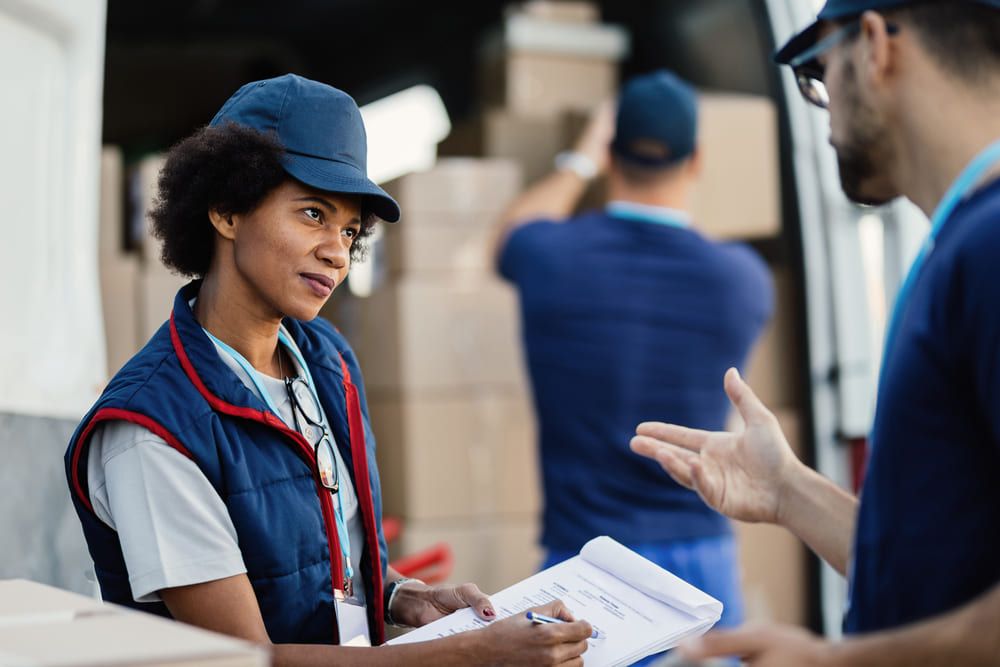What does customs clearance look like for international removals?

Moving internationally is not only a logistical challenge, but also a legal one. Customs clearance is one of the key steps in the process and requires careful preparation to avoid delays or problems at the border. In this article, we will outline how customs clearance works when moving internationally and what rules apply when transporting personal property.
What is customs clearance?
Customs clearance is an inspection procedure during which customs inspects the property being transported for compliance with the customs regulations of the destination country. This includes both an assessment of documentation and a physical inspection of the consignment. The process aims to prevent smuggling, protect the internal market from illegal goods and ensure compliance with local tax laws.
Documents required for customs clearance
In order to carry out customs clearance, the relevant documents must be prepared:
- Packing list – a detailed list of the items being transported, preferably in two languages: country of origin and country of destination.
- Proof of identity – passport or identity card that proves the identity of the property owner.
- Document confirming the change of residence – e.g. tenancy agreement, property deed or certificate from employer.
- Invoices and proofs of purchase – when transporting valuable items such as electronics, works of art or jewellery.
- Customs certificates – in some countries, additional declarations are required, such as certificates of origin of goods or certificates of conformity.
- Animal health certificates – if pets are being transported, current health and vaccination certificates are required.
Step-by-step customs clearance procedure
- Declaration of property for clearance
The property being transported must be declared for customs clearance by submitting the relevant documents to the customs office or customs agent. In some cases, it is possible to declare electronically, which speeds up the whole process.
- Verification of documents
Customs checks the completeness and correctness of the documentation. In the event of shortcomings, they may request additional information or documents proving the legality of the property being transported.
- Physical inspection
Some parcels may be subject to physical inspection. Customs officials may ask you to open parcels and make the contents available for inspection. It is a good idea to organise possessions in a way that makes it easy to access the most important items.
- Customs duties and taxes
Depending on the destination country and the items being transported, duties and taxes may be charged. It is worth checking duty rates in advance, as well as the tax exemptions available for permanent movers.
- Approval of clearance
After positive verification and payment of any duties, the property is released for transport. The owner receives a confirmation of customs clearance, which must be retained in case of further checks.
Customs exemptions and concessions
Many countries offer customs relief for permanent movers. To benefit from such exemptions, certain conditions must be met:
- Documentation of the change of residence – evidence of a permanent move to another country, such as an employment contract or enrolment of children in school, is required.
- No intention to resell the property – items transported must be for personal use and cannot be sold for a specified period after the move.
- Minimum period of possession of the property – it is often required that the items have been in use by the owner for at least 6-12 months prior to the move.
Cooperation with a customs agency or removal company
To make the customs clearance process easier, it is worth using the services of a professional removal company or customs agent. These specialists will take care of the formalities, which greatly simplifies the procedure and minimises the risk of problems at the border. These companies often offer a comprehensive service, including packing, transport and legal advice.
The most common problems and how to avoid them
- Incomplete documentation
Lack of required documents is the most common cause of delays. Ensure that your paperwork is complete before you start check-in. It is worth making a checklist to ensure nothing is missing.
- Incorrect declaration of values
Under- or over-valuing the items transported may lead to financial penalties or confiscation of property. Values should be accurate and properly documented.
- Carriage of prohibited articles
Before the move, make sure that your belongings do not include prohibited items such as hazardous substances, weapons or animal products without the appropriate certificates.
- Ignorance of local regulations
Each country has its own specific customs regulations. A lack of knowledge of these can lead to unpleasant surprises. Before moving, it is a good idea to familiarise yourself with the requirements of the destination country.
Specificities of customs clearance in selected countries
England
After Brexit, additional customs controls have been introduced. Those moving to the UK must submit a ‘Transfer of Residence’ (ToR) declaration, which allows customs duties on personal property to be waived.
Germany
In Germany, detailed document control is mandatory and the property being transported must have been in use for at least six months prior to the move in order to benefit from customs concessions.
France
France requires proof of residence in the country and a detailed list of the items being transported with their value. Exemptions from customs duties are available for those who are moving permanently and do not intend to sell their possessions.
Clearance for international removals
Customs clearance for an international removals is a process that requires careful preparation and knowledge of customs regulations. Attention to detail and working with professionals can make the whole process much easier and ensure your move goes smoothly. Remember that each country has its own specific regulations, so it is a good idea to familiarise yourself with the requirements of the destination country beforehand. Awareness of the regulations and proper organisation is the key to success in any international move
